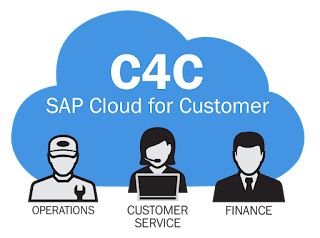
That transparency into the customer is incredibly valuable. For example, when performing a customer move-in, the CSR requires a lot of details about the customer class, applicable rate tariff, and move-out of the prior customer. Coordinating this with a non-integrated CRM is difficult, but with C4C and the ERP integrated it’s much easier. Similarly, if a customer is about to be disconnected for non-payment, but the CSR using SAP C4C sees that payment was just made that day, the customer’s power won’t be interrupted. Such visibility is difficult to achieve with non-integrated CRM solutions that may only be updated once a day, or provide very little information from their updates.
C4C also delivers a means to interact with customers through multiple mediums. Referred to as omni-channel, C4C allows for traditional Computer Telephony Integration (CTI) as well as email, text (SMS), and social networks (e.g., Facebook and Twitter). For example, incoming emails can be read and classified by C4C, automatically creating service tickets and assigning them to the appropriate agent for follow-up. Agents, in turn, can get 360-degree views of their customers, assess account status, and provide pre-determined actions from scripted communication templates.
Moreover, if a service call is necessary, technicians in the field can use C4C to update their progress on service tickets. After troubleshooting service interruptions while on-site at customers’ premises, field techs can even use their mobile devices to charge their time to service orders created by CSRs. SAP C4C is delivered with an out-of-the-box Fiori UI for mobile workers, many features of which work both on- and off-line when cell coverage or WiFi is not available.
SAP also delivers embedded analytics in C4C that customer service managers will appreciate. Because C4C is built on the HANA in-memory database, both OLTP and OLAP capabilities are on the same application platform. This means that analyzing service ticket metrics and utility response times is already part of the C4C solution, complete with graphical displays for visualization of the data for management to analyze. With C4C, a utility won’t have to export its data to an external warehouse for analysis, losing valuable time moving data around just to prepare it for analysis. It’s all right there, ready to be considered carefully and acted upon promptly. And that can only help customer service initiatives.




 ShareThis
ShareThis
No comments:
Post a Comment